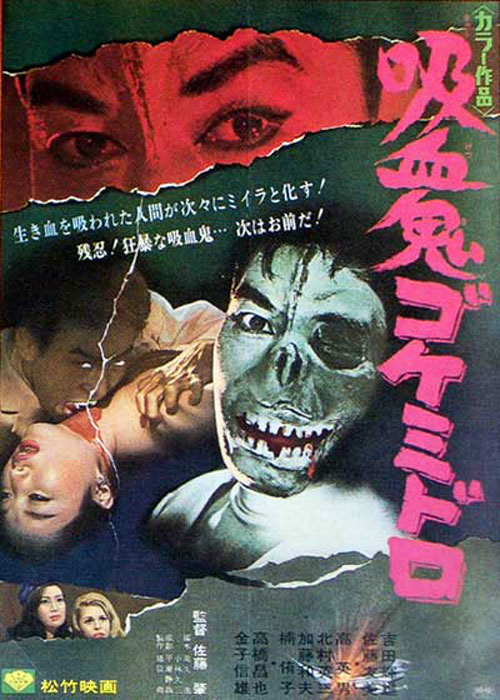
In my most recent post to this column (of Francois Truffaut’s Stolen Kisses), I mentioned that I would skip the next film on my chronological list, Goke, Body Snatcher From Hell, because I had already podcasted about it not that long ago. But I changed my mind. That decision was partially driven by a mistaken assumption on my part that the next title on my list, namely Orson Welles’ The Immortal Story, was about to get a new release from Criterion the following Tuesday. Actually, that disc won’t hit the market for another couple of weeks, not until August 30, which is too long for me to just let this column sit idle. The reason that I thought that The Immortal Story‘s Blu-ray debut was imminent was because I’ve seen pictures of review copies in circulation and Criterion started yapping about Orson Welles in The Current earlier this month, which usually signals that the film being discussed will be issued soon thereafter. I guess I should have paid more attention to the details.
So that’s my alibi as to why I decided to change my mind and give Goke the write-up that it deserves. As it turned out, I never did dedicate one of my Journey Through the Eclipse Series columns to this film, or to The Living Skeleton and Genocide, the two subsequent titles included in Eclipse Series 37: When Horror Came to Shochiku. The only one I ever wrote up was The X From Outer Space, easily the most ridiculous offering in that set, though quite delightful in its own way. Goke, Body Snatcher From Hell is unrivaled as being the brightest, most color-drenched film of the four, and maybe the most beloved. So for me to just breeze on by without giving it further consideration feels like it would be an injustice. And what’s my hurry anyway? I have nothing else to write about for the next two weeks. Reviewing this movie will be a cinch.
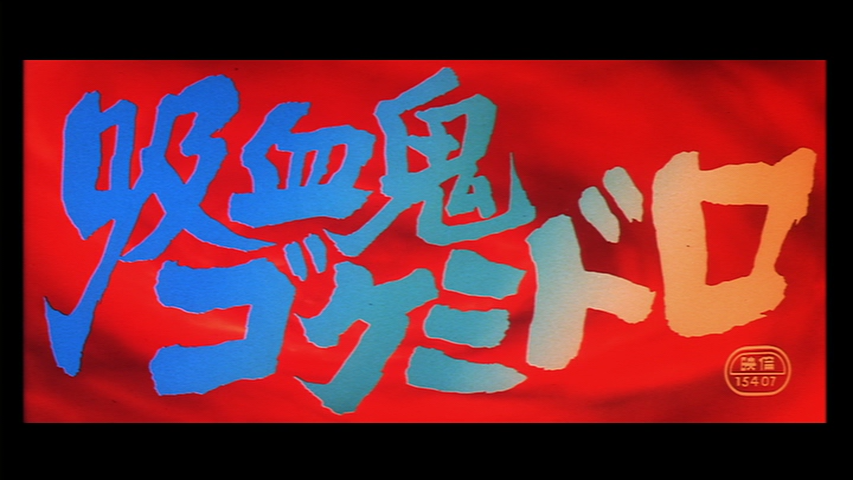
And since I never included it in my Journey Through the Eclipse Series, I’m going to return to the old template I used for that column, temporarily setting aside the “tl;dr / how it speaks to 1968 / how it speaks to me today” sections that I typically use in this version of my blog. As for how the film might have originally impacted audiences, I like to imagine that most intelligent viewers of the late 60s and subsequent decades had fun watching this garish, erratic mess of a movie even as they sifted through clunky, heavy-handed warnings about the futility of war, political striving and the lust for power and control. The film touches on potentially weighty themes, but the goofy context in which they’re delivered makes it hard to take the dire message all that seriously. Are the creators of this film sincerely trying to persuade viewers to turn away from the paths of destruction that, if followed, will doom our species and the very planet itself? Or are they just toying with us, casually crafting a psychedelic neon hellscape that implies the imminent extinction of everything we hold dear just for the sake of a few cheap giggles? Maybe something gets mangled in the translation, but I have a hard time deciding either way.
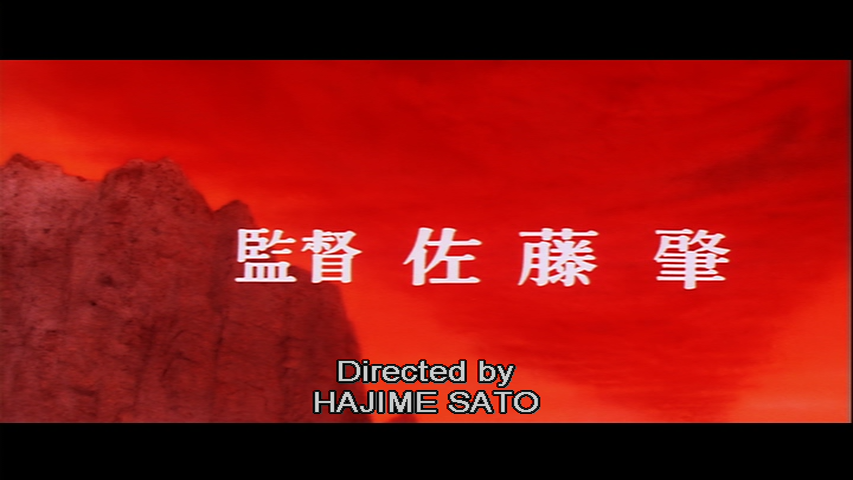
The director of Goke, Body Snatcher From Hell is a guy named Hajime Satô. The one line summary on Hulu says that this film was “perhaps his greatest triumph.” I think it’s a safe bet to delete the “perhaps” from that phrase. Nothing else he ever made will warrant a place in the Criterion archives, I can all but guarantee it. After Satô finished this project, he was no longer entrusted with feature films. Another way of looking at it is that perhaps he had nothing more to say, having expressed his fundamental nihilism in this excessively bleak “WE’RE ALL GONNA DIE AND THERE’S NOTHING WE CAN DO ABOUT IT” scenario. The liner notes for this set, written by Chuck Stephens, mention that Satô continued to work in television into the 1980s, but after this film, his IMDb profile is almost non-existent, except for an unknown number of episodes that he helmed for a mid-70s Japanese TV drama titled Yoake no keiji, which Google Translate renders as “Posted of Dawn.” A very strange trivia bit that I tracked down in my research just now is that Paul Rodgers, former singer of 1970s hard rock supergroup Bad Company apparently wrote the theme song for the show! That’s really weird, but this video seems to offer evidence to back it up. Listen to his comments as he gives a spoken introduction to the song in a performance from 2010.
OK, enough digression. Goke, Body Snatcher From Hell isn’t a film that requires a whole lot of explication, nor am I all that eager to tack whatever reputation I’ve managed to establish as a critic and connoisseur of fine cinema to its merits, or lack thereof. This is prime Saturday afternoon matinee or midnight creep-fest fare, on its surface level for sure, and even if one wants to subject it to a more discerning analysis, I think its bank of ideas will crumble as quickly as the wind-blown corpses that evaporate to dust after the Gokemidoro aliens have had their way with their unwilling victims. Here’s a rare English-language trailer that gives neophyte viewers a glimpse of the horrors that await. (FWIW, we’re not treated to an English dub soundtrack on the Eclipse disc. That’s probably all for the best.)
For the sake of a summary, here’s my quick rundown of what happens. A plane carrying a variety of emotionally troubled, unstable individuals flies through a hostile blood-red sky. Suicidal birds start crashing into windows and rumors of a suicide bomber on board begin to circulate, freaking out the passengers and warning us all that dire events are about to unfold. A strange UFO shoots over the plane, causing a crash landing which kills most of the passengers except for those who must stay alive long enough to advance the story. The first ten minutes before the plane crash are spent sketching out a variety of intrigues set up like dominoes destined to topple into each other . The seeds of conflict quickly and somewhat arbitrarily come to fruition, start a rapidly escalating chain reaction of tit-for-tat violence and hammy over-acting that continues practically non-stop for the next 80 minutes. The turns of events give each character their requisite motivations, pathos and opportunities to show both their venal and their more sympathetic sides, some more obviously positioned on one side of the equation or the other. There’s the corrupt braggart politician who lusts after the alluring wife of his servile flunky. There are the erratic villains, a smug sniper and a histrionic mad bomber who phones in his terror threat for no motivation beyond “society is boring.” There’s a blonde American woman flying to retrieve the body of her husband, a recent casualty of the Vietnam War. And there’s the smartass know-it-all shrink who seems to get his kicks from putting himself on some level above his fellow humans, whom he seems to regard as little more than lab rats.
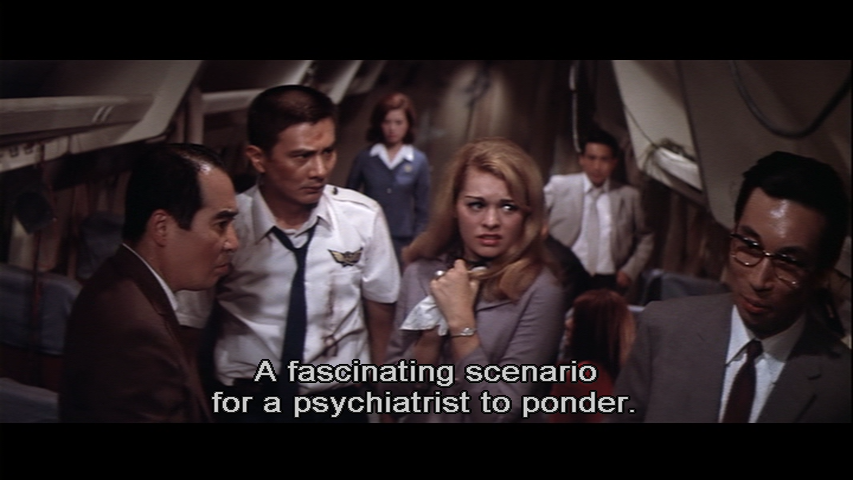
So we get the set-up of a sealed off environment, as the plane is somehow impossible to locate after it goes down in a particularly barren mountain desert wilderness. Everyone is contained in the wrecked airliner and for inexplicable reasons, they feel compelled to remain there. I dunno, if I was fortunate enough to survive a hard landing like that, I’d be pretty eager to get out of the plane and stay out, under normal circumstances. But I guess once the UFO shows up, the wisdom of staying put does seem to be validated.
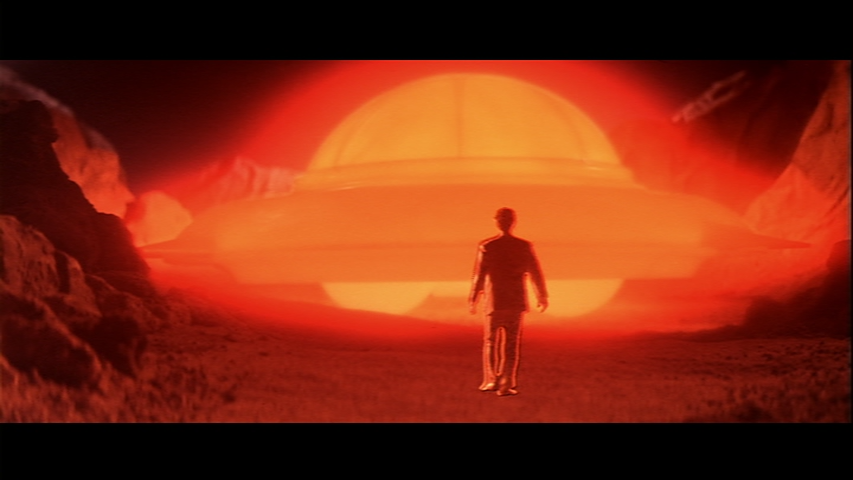
The spaceship emits an irresistible signal that draws in its intended targets, splits their forehead open and fills it with a silvery goop reminiscent of The Blob. That goop is (apparently) a substance that allows the Gokemidoro to seize control of the human vessel and turn it into a ghastly fiend that stalks its prey, bites it on the neck and drains its blood. What purpose any of that serves to advance the Gokemidoro’s ultimate purpose (which I will spell out in more detail shortly) is never really explained, but the bulk of Goke, Body Snatcher From Hell is more or less a vampire flick that relies on the standard shock and dread cliches of the genre to provoke a response from the audience.

And I suppose that for the most part, that modest ambition of providing entertainment of a creepy and bizarre nature is sufficiently realized over the course of a swift 84 minutes. The story is pure hokum that doesn’t really hold together in the aftermath of a reasonably thorough Q & A, whether its conducted with friends or in the solitude of one’s mind in trying to figure out what was just observed. But the threadbare plot and transparent character motivations do offer enough of a framework to support the weight of some memorable visual effects sequences, at the very least.
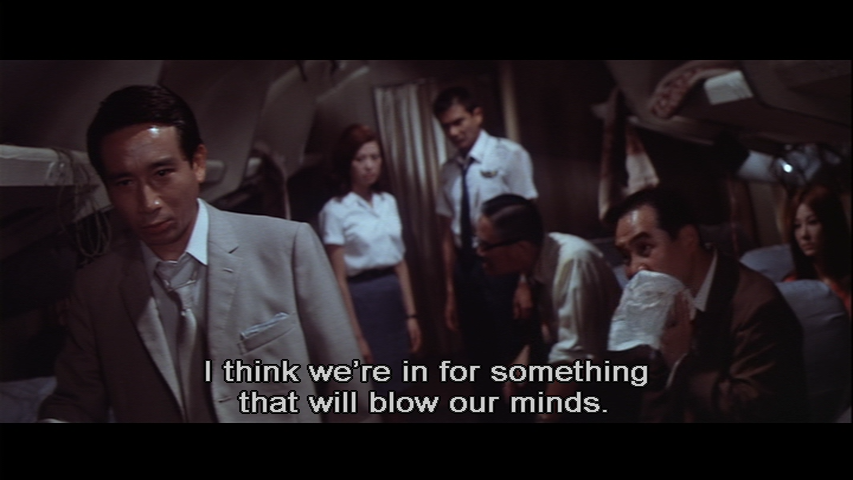
But even more than the gaudily grotesque eye candy of a few noteworthy sequences, I’m struck by the unflinching bleakness of the film’s conclusion, a rendering of judgement upon the entire human race due to the destructive impulses pursued by a small fraction of its overall population – more specifically, the heads of governments and their militaristic enablers who put their mad destructive delusions into practice. Goke, Body Snatcher From Hell does seem to have a conscience, warped as it is, in that the monster’s goal is to exterminate species that prove to be unworthy of surviving due to their ongoing misconduct. The film’s ultimate message is that of an antiwar diatribe, basically warning us that if we don’t stop killing each other, some larger, even more menacing adversary will come in from outer space (or is it, from Hell?) and finish the job altogether. Now, why exactly the Gokemidoro have the moral latitude to slaughter uncounted billions of seemingly innocent souls just because the rulers of a few armies can’t seem to refrain from starting their own wars every now and then is never explained. But they do it anyway, and apparently, in the eyes of the filmmakers, we must deserve it. If we didn’t, they would have written the story differently.
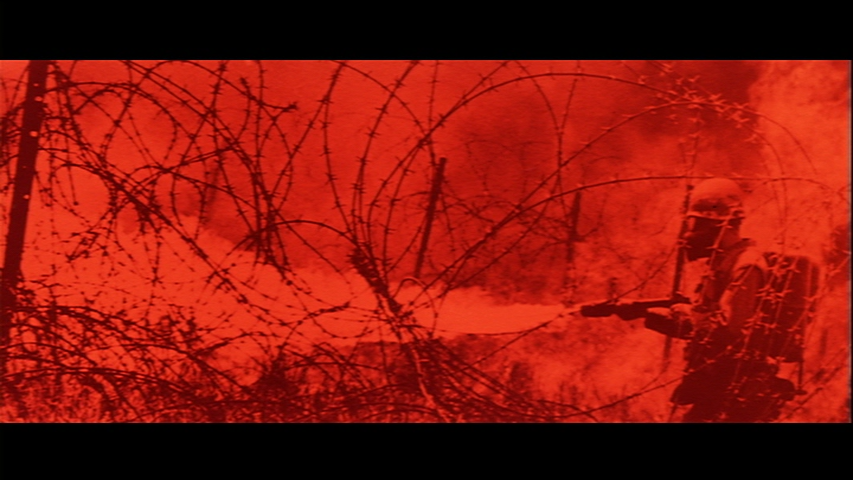
So yes, I do find this all rather confusing, and more than a bit delirious, when I hit the pause button and try to think it all through. Maybe that was my big mistake to begin with. Best to just sit back, turn down the lights, pump up the volume and enjoy the poppin’ colors, the goosebump-inducing soundtrack, the emotional whiplash of ridiculous 180-pivots into histrionic overdrive that stimulate my senses for a little while, and leave it at that.
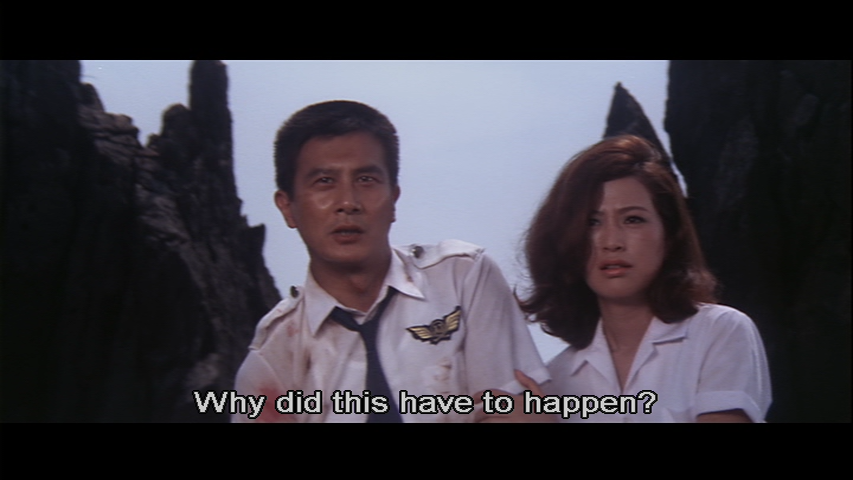
Why indeed, I wonder that myself… I suppose there was the prospect of making a few bucks from the hordes of pimply faced teenager horror and sci-fi fanatics looking for some new kind of kick. Back in 1968 when the Shochiku Studios were struggling to find financial stability as their industry endured a crisis of shifts in taste, the venerable old imprint that had once boasted the likes of Ozu, Mizoguchi, Naruse and Kinoshita was floundering, in search of a new direction as they faced an uncertain future. As they soon learned, B-grade schlockfests were not the formula that would provide that lifeline. The following year, Shochiku bosses luckily stumbled into a lucrative franchise, the “Tora-san” series, that kept the studio afloat for the next few decades.
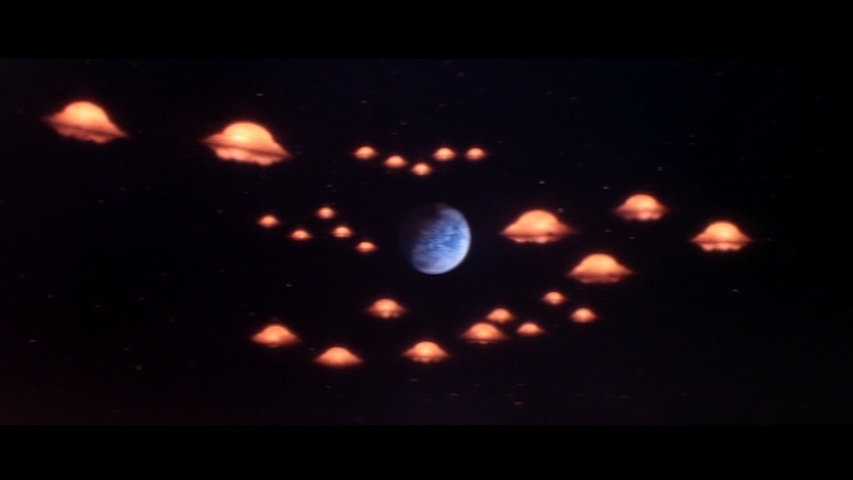
But I’m glad we have this weird little relic of an experiment that ultimately failed, even though they threatened global-level extinction just to grab and hold our attention. Come on, I prefer a more subtle delivery than that, Shochiku!


Previously: Stolen Kisses
Next: The Immortal Story



![Bergman Island (The Criterion Collection) [Blu-ray]](https://criterioncast.com/wp-content/uploads/2022/11/bergman-island-the-criterion-collection-blu-ray-400x496.jpg)
![This Is Not a Burial, It’s a Resurrection (The Criterion Collection) [Blu-ray]](https://criterioncast.com/wp-content/uploads/2022/11/this-is-not-a-burial-its-a-resurrection-the-criterion-collection-blu-ray-400x496.jpg)
![Lars von Trier's Europe Trilogy (The Criterion Collection) [The Element of Crime/Epidemic/Europa] [Blu-ray]](https://criterioncast.com/wp-content/uploads/2022/11/lars-von-triers-europe-trilogy-the-criterion-collection-the-element-of-400x496.jpg)
![Imitation of Life (The Criterion Collection) [Blu-ray]](https://criterioncast.com/wp-content/uploads/2022/11/imitation-of-life-the-criterion-collection-blu-ray-400x496.jpg)
![The Adventures of Baron Munchausen (The Criterion Collection) [4K UHD]](https://criterioncast.com/wp-content/uploads/2022/11/the-adventures-of-baron-munchausen-the-criterion-collection-4k-uhd-400x496.jpg)
![Cooley High [Criterion Collection] [Blu-ray] [1975]](https://criterioncast.com/wp-content/uploads/2022/11/cooley-high-criterion-collection-blu-ray-1975-400x496.jpg)